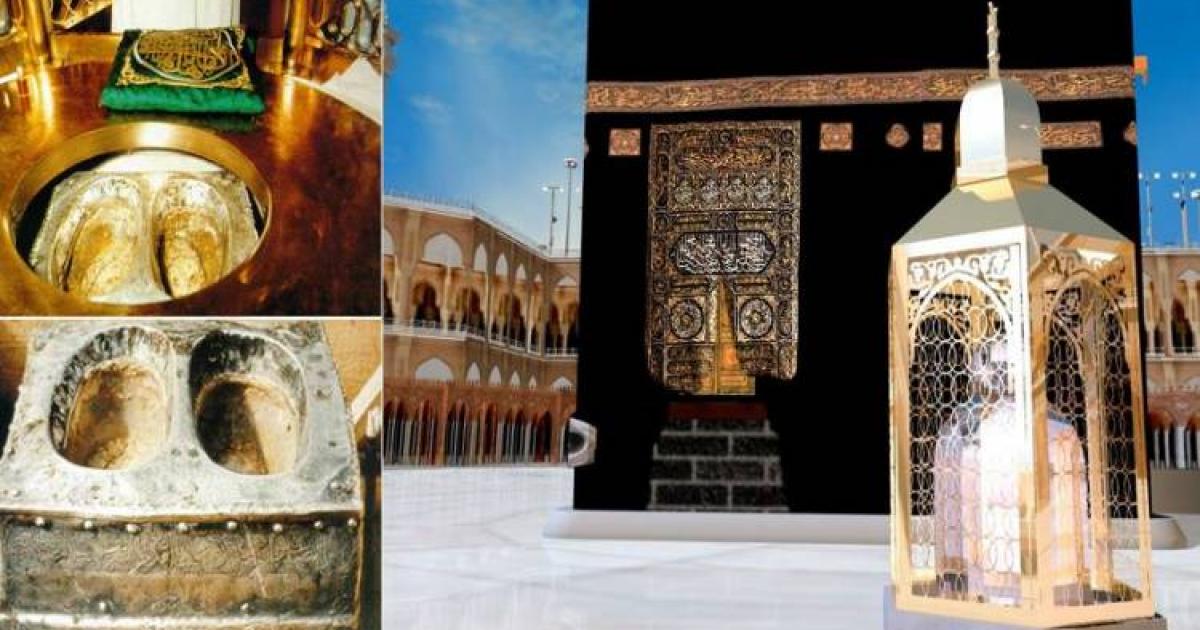Landmarks of the Holy Mosque: A Journey of Hajj and Umrah
Monday،2 Jun،2025

Why the Sacred Mosque (Al-Masjid Al-Haram) Is the Holiest Site on Earth
The Sacred Mosque in Mecca is the most revered place on Earth. It is home to the first house ever built for the worship of Allah and the spiritual destination for millions of Muslims who come from all corners of the globe to perform Hajj and Umrah.
Yet, many pilgrims and visitors are unaware of the intricate details and historical significance of its landmarks, despite their deep connection to the stories of prophets and pivotal events in Islamic history.
In this article, we take you on an educational journey through Al-Masjid Al-Haram, exploring its most important sites, their roles, and spiritual status—so your visit may be more meaningful and filled with humility.
1. The Kaaba (Al-Ka‘bah Al-Musharrafah)
The Kaaba is the beating heart of the Sacred Mosque and the holiest place in Islam. It was the first structure built for the worship of Allah,
constructed by Prophet Ibrahim and his son Isma'il (peace be upon them).
Allah says:
"Indeed, the first House [of worship] established for mankind was that at Bakkah – blessed and a guidance for the worlds."
— [Surah Al-Imran: 96]
Features of the Kaaba:
- Shape: Rectangular cube
- Height: Approx. 15 meters
- Corners: Four (Black Stone, Iraqi, Levantine, Yemeni)
- Cover: Known as the Kiswah, replaced annually
The Kaaba is not only the Qibla (direction of prayer) for Muslims worldwide, but it also serves as the central point for the ritual of Tawaf (circumambulation).
2. The Black Stone (Al-Hajar Al-Aswad)
Located at the southeastern corner of the Kaaba, the Black Stone marks the starting and ending point of Tawaf.
The Prophet ﷺ said:
"The Stone will come on the Day of Judgment with two eyes to see and a tongue to speak, and it will testify for those who touched it in truth."
— [Tirmidhi]
It is Sunnah to kiss the stone, but if one cannot, pointing at it suffices.
3. The Yemeni Corner (Al-Rukn Al-Yamani)
This is the southwestern corner of the Kaaba. It is Sunnah to touch it with the hand, but not to kiss it, following the Prophet’s ﷺ practice.
Recommended supplication while touching it:
“Our Lord, grant us in this world [that which is] good and in the Hereafter [that which is] good and protect us from the punishment of the Fire.”
4. Al-Multazam
Al-Multazam is the area between the Black Stone and the Kaaba’s door. It is a place of intense supplication, where many companions of the Prophet used to press themselves against the wall and plead earnestly with Allah.
5. The Door of the Kaaba
Located on the eastern side of the Kaaba, the door stands about 2.25 meters above ground.
It was renovated under King Khalid bin Abdulaziz in 1399 AH and made entirely of pure gold.
6. Maqam Ibrahim (The Station of Abraham)
Situated in front of the Kaaba’s door, Maqam Ibrahim contains a sacred stone bearing the footprints of Prophet Ibrahim as he built the Kaaba.
Allah says:
“In it are clear signs [such as] the standing place of Abraham.”
— [Surah Al-Imran: 97]
It is Sunnah to pray two Rak’ahs behind it after completing Tawaf.

7. Zamzam Well
Located around 21 meters east of the Kaaba, Zamzam is the blessed well that gushed beneath Isma’il’s feet in response to Hajar’s prayer.
Virtues of Zamzam Water:
- Blessed water
- A healing drink, as per one's intention
- Now distributed via drinking stations throughout the mosque for ease of access

8. Al-Hijr (Hijr Isma'il)
Al-Hijr is a semi-circular area adjacent to the northern wall of the Kaaba. It is believed to have been part of the original Kaaba structure built by Prophet Ibrahim,
which the Quraysh left out during their reconstruction.
- Rulings:
- Praying in it is recommended
- Tawaf must be done outside of it as it is considered part of the Kaaba
9. Al-Safa and Al-Marwah
These are two small hills located within the mosque. Allah ordained Sa’i (ritual walking) between them to commemorate Hajar’s search for water.
Facts about Al-Mas‘a (The Sa’i Path):
- The Sa’i starts at Al-Safa and ends at Al-Marwah
- Distance: About 394.5 meters between them
- Number of rounds: 7 (each trip counts as one)
- Equipped with air conditioning, mobility lanes, and services for people with disabilities
Allah says:
“Indeed, Safa and Marwah are among the symbols of Allah.”
— [Surah Al-Baqarah: 158]

10. Mataf Area (Circumambulation Courtyard)
This is the open white marble area surrounding the Kaaba, dedicated to the Tawaf ritual. It’s the preferred location for many pilgrims due to the clear visibility and proximity to the Kaaba.
With recent expansions, multiple levels were added to ease congestion, including upper floors and a dedicated Sa’i pathway.

11. The Grand Mosque and Its Minarets
Al-Masjid Al-Haram is the largest and most sacred mosque in Islam. It can now accommodate over 2 million worshippers during peak seasons and features towering minarets and iconic Islamic architecture.
The mosque encompasses all the landmarks mentioned above and is equipped with advanced climate control and modern facilities to assist the pilgrims.

Al-Masjid Al-Haram: Where Mercy Is Manifest and Faith Is Deepened
A visit to the Sacred Mosque is not just a religious ritual—it is a profound spiritual journey where the pilgrim experiences the deepest forms of faith and submission. Gaining knowledge of these holy sites adds depth, understanding, and a sense of reverence to your acts of worship.
If you plan to perform Hajj or Umrah, make sure to explore these landmarks, reflect on their historical significance, and take full advantage of your presence in the holiest place on Earth to renew your connection with Allah.






